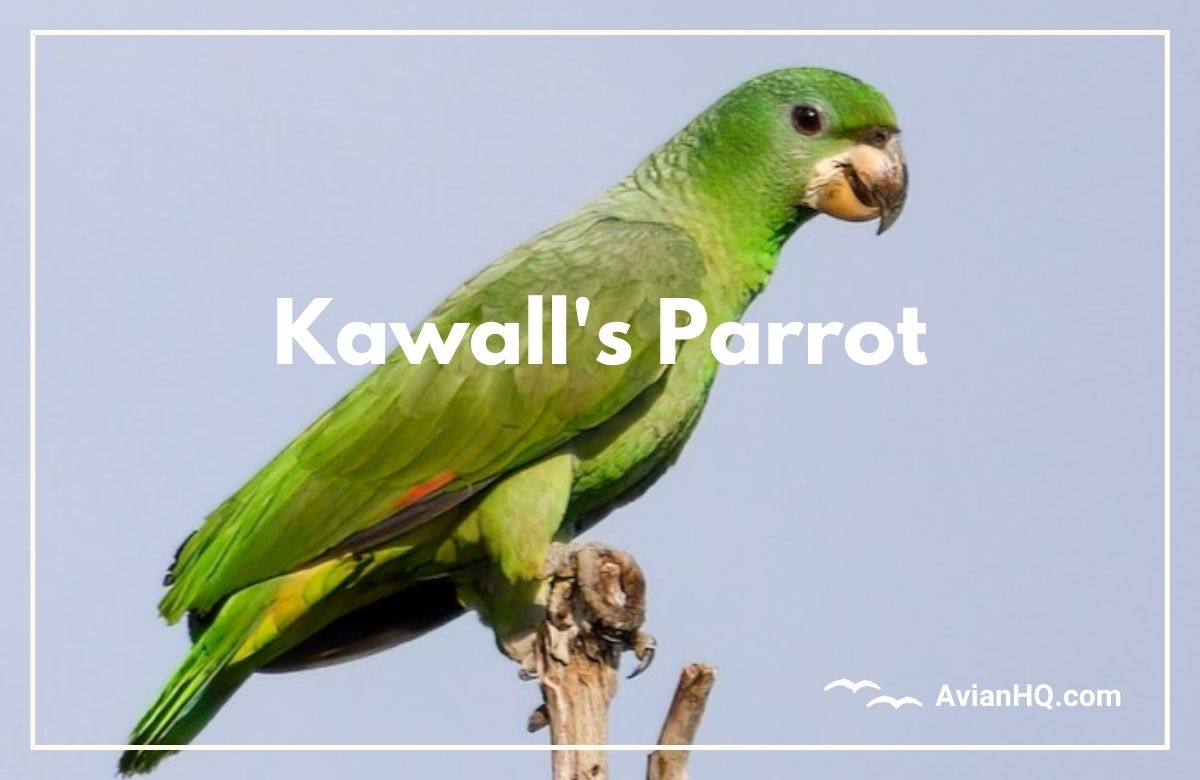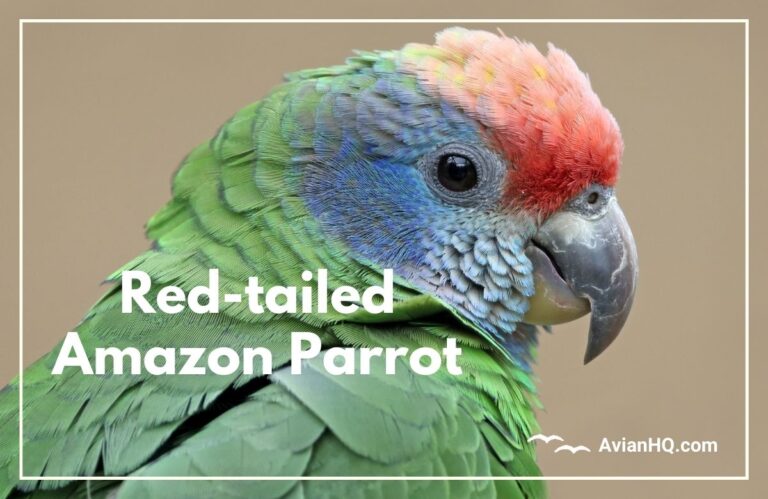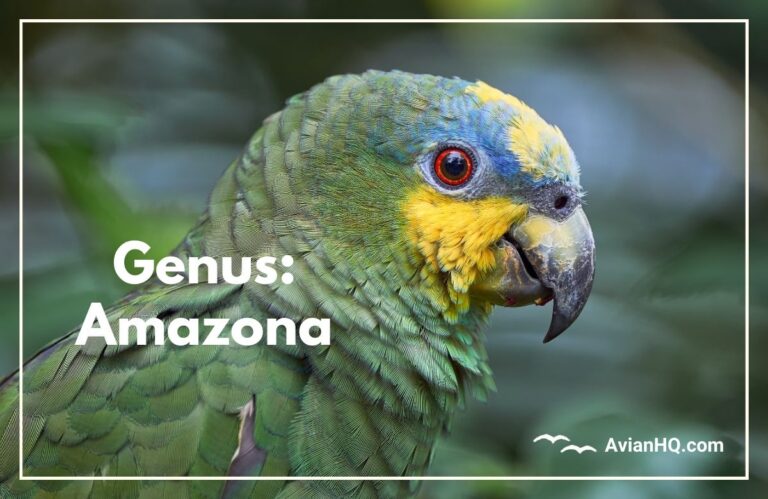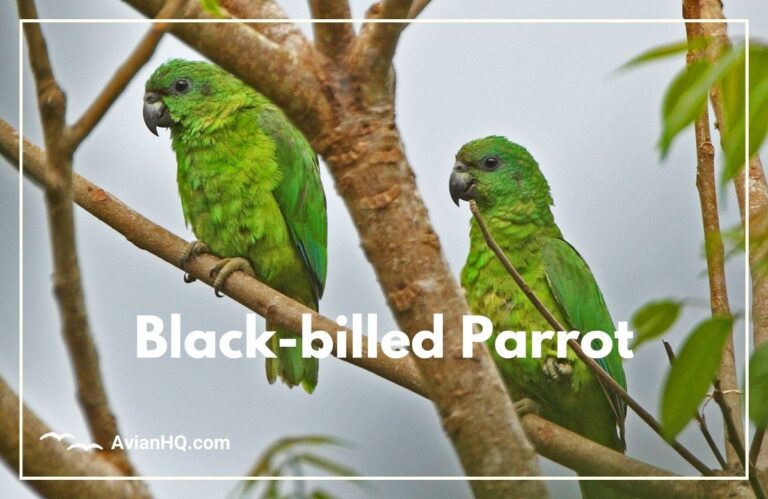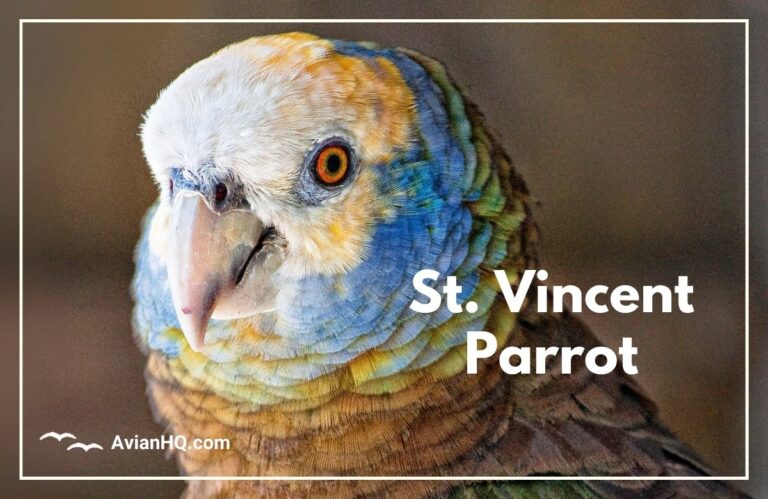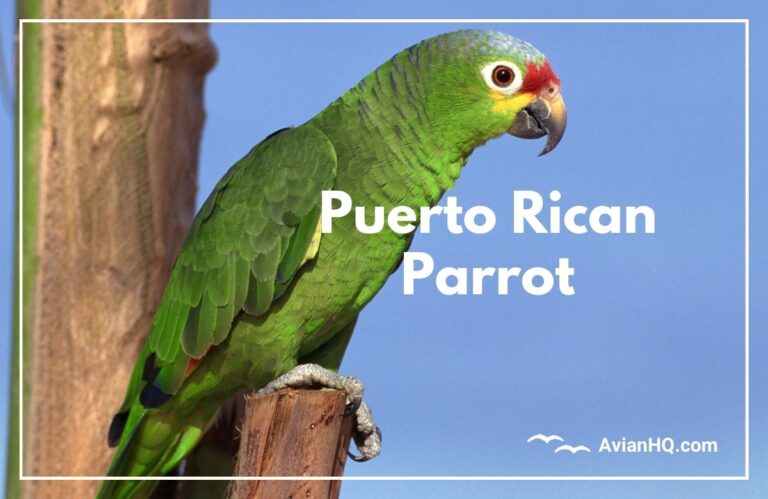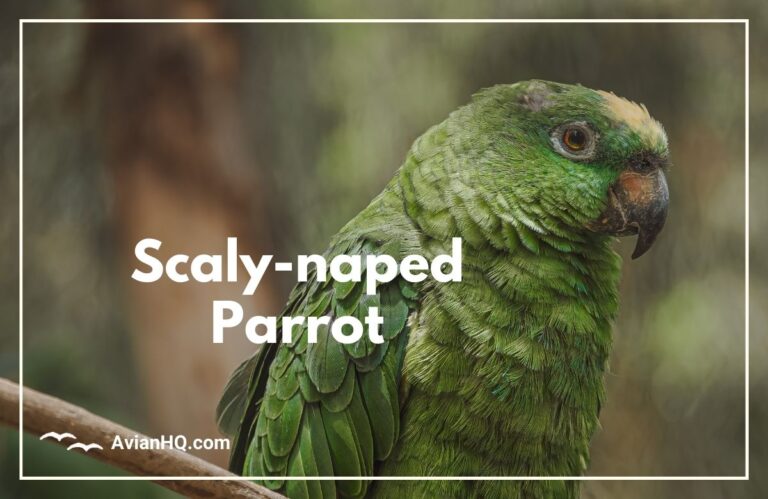Kawall’s Parrot (Amazona kawalli)
You’ve probably heard of popular parrot species like macaws, cockatoos, and budgies. But have you ever encountered the Kawall’s Parrot? This rare Amazon parrot remained unknown to science for over 80 years before being rediscovered in the late 20th century.
A Lost Species Found Once More
The Kawall’s Parrot (Amazona kawalli) is a green Amazon parrot that is about 14 inches (35 cm) from head to tail. It disappeared from record after some sightings in the early 1900s. Then, in 1989, aviculturalist Nelson Kawall obtained several unusual Amazon parrots near Belém, Brazil. Researchers determined these birds were a species new to science, and Kawall’s Parrot was officially described.
“After not being seen for decades, this parrot essentially returned from the dead once someone took a second look.”
The species name kawalli honors Nelson Kawall’s key role in identifying the unique qualities of this Amazon. Today, wild populations appear stable though threatened by habitat loss across parts of Brazil’s Amazon basin.
Recognizing This Rediscovered Parrot
The Kawall’s Parrot resembles other green Amazon parrots but has some distinguishing features:
- White facial markings with a narrow stripe under the bill
- Bright blue and red patches on the wings
- White bare skin at the base of it’s gray bill
- Smaller pale eye ring compared to similar species
These markings, especially the white bill stripe, set the Kawall’s Parrot apart from close relatives. Paying attention to subtle plumage differences helped reveal that this Amazon represented it’s own unidentified species.
History and Taxonomy
The Kawall’s Parrot has a winding scientific history shrouded in confusion over it’s identity. Here is a look back at the discovery and taxonomy of this species.
First Sightings and Early Mystery
The first known report of the Kawall’s Parrot came in 1904 from an area near the Amazon River in Brazil. Scientists recorded sightings of some “aberrant mealy amazons,” meaning odd individuals of the Mealy Amazon parrot. But the unusual traits of these birds would remain uninvestigated for decades.
Then in 1989, Brazilian aviculturalist Nelson Kawall acquired several Amazon parrots through trades near Belém that didn’t match any known species. Kawall contacted experts, setting in motion new research that would finally unravel the identity of what turned out to be the elusive Kawall’s Parrot.
Honoring the Expert Who Cracked the Case
Once scientists took a close look at Nelson Kawall’s mystery parrots, they realized these birds represented a distinct, unclassified species. Researchers formally described the new Kawall’s Parrot for science in 1989, naming it Amazona kawalli in honor of Kawall’s critical role in understanding the species.
Today, most classification puts the Kawall’s Parrot in the genus Amazona, part of a group of mostly Central and South American parrots known as Amazon parrots. Within that group, scientists still debate where the Kawall’s Parrot fits on the Amazon family tree. More research can hopefully uncover the evolutionary origins of this rediscovered rarity.
No Known Subspecies, But Possibly Isolated Populations
Currently, no described subspecies or geographic races exist for the Kawall’s Amazon parrot. However, unconfirmed reports raise the possibility of isolated groups outside the main population.
In one case, a museum specimen supposedly collected in Colombia suggests Kawall’s Parrots or similar birds inhabit other rainforests besides the core range in Brazil. The species may have evaded notice by scientists working in frontier regions of the Amazon. Finding and protecting vulnerable isolated groups remains important for conservation.
Physical Appearance
The Kawall’s Parrot sports a bright green body with colorful highlights on it’s wings, tail, and facial markings. Here is a closer look at the physical features and appearance of this Amazon parrot.
Size and Proportions
The Kawall’s Parrot reaches around 14 inches (35-36 cm) in total length. It stands as a medium-sized Amazon parrot, generally matching relatives like the Panama Amazon.
Authorities have not yet recorded weight statistics for wild Kawall’s Parrots. In captivity, healthy birds likely range from 10-20 ounces (280 to 566 grams) based on related species. Overall, the Kawall’s Parrot possesses an average Amazon build with a sleek green shape.
Smooth Green and Bright Accents
The back, chest, belly and most of the wings show solid green feathers on the Kawall’s Parrot. The crown and sides of the neck display darker scaled patterns.
Vibrant colors appear in patches of red and blue on the wing flight feathers. The short square tail has a green base blending to yellow-green at the tip, plus red bases bordered in blue on the lateral feathers.
Distinctive Facial Skin and Markings
The light horn-gray bill contains a striking small white patch of bare facial skin at it’s base, unique to this species. It also flaunts thinner white rings around the eyes compared to similar species.
No differences currently distinguish males from females or adults from juveniles. But the signature white cheek stripe under the bill helps recognize the Kawall’s Parrot in the wild.
Habitat and Distribution
The Kawall’s Parrot occupies rainforest habitat mainly in Brazil’s Amazon basin. it’s elusive nature means research continues to uncover new details about where these rare Amazons live and roam.
Endemic to Brazil’s Amazon Region
The known endemic range extends across parts of the Amazonas and Pará states in northwest Brazil. Records place Kawall’s Parrots along the Jurua River and near the city of Santarém on the Amazon River.
They primarily inhabit lowland Amazon rainforest rather than highland regions. Kawall’s Parrots demonstrate a preference for flooded forests and woodlands along river banks and tributaries.
Possible Wider Distribution
While most documented locations come from Brazil, evidence raises questions about a potentially broader habitat range, perhaps extending into border forest areas of other South American countries.
A museum skin from decades ago hints at the species’ presence in Colombia though not confirmed. In Brazil near the Peru border, a caged Kawall’s Parrot was found within Amazonas National Park, suggesting wild groups inside the preserve.
Ultimately the Kawall’s Parrot’s scarcity means it’s full distribution awaits more encounters with this elusive rainforest species. Finding new populations helps support updated conservation plans.
Diet and Feeding
The Kawall’s Parrot consumes a diverse mix of rainforest foods. This section explores what we know so far about the dietary preferences and foraging habits of this little-seen Amazon parrot.
An Omnivorous Tropical Diet
Like most parrots, the Kawall’s Parrot seems to eat a wide opportunistic diet consisting of seeds, fruits, flowers, leaves, and more. Their strong beaks and tongues help them access and process diverse forest foods.
Documented wild foods include palm fruits and various tree seeds. Captive birds also enjoy sprouted beans, nuts, and vegetables. Though not confirmed, they likely eat some insects and grubs like related species. Overall the Kawall’s Parrotappears well-adapted to search out nourishing meals across it’s lush habitat.
Foraging Sites and Behaviors
Feeding activity concentrates in the upper and middle levels of the rainforest canopy down to understory trees. The species can use it’s swift aerobatic flight to travel and search out fruiting trees and seed pods.
Kawall’s Parrots feed socially in pairs or small flocks, especially when abundant food becomes available. At other times, these Amazons break into solitary foraging patterns across a territory. Their dietary flexibility aids survival in the dynamic yet threatened forests this unique parrot calls home.
Breeding and Reproduction
Many details around mating and nesting remain uncertain for the Kawall’s Parrot. But research offers some clues into the reproductive habits of this species.
Nesting Inside Rainforest Tree Cavities
Like many parrots, Kawall’s Parrots nest in holes naturally formed in tall rainforest trees. They may seek out both live trees and dead snags with existing cavities excavated by woodpeckers or degraded by fungi and insects.
Tree hollows offer shelter and security for parents and young, high above ground predators. However, competition over prime nesting sites with other cavity nesters may occur in areas of habitat decline.
Breeding Season and Efforts Still Unknown
Authorities have not confirmed the breeding season span or clutch sizes for wild Kawall’s Parrot pairs. For tropical parrots, mating and rearing young often aligns with rainy periods offering abundant food.
Given similarities to close Amazon relatives, female Kawall’s Parrots likely lay three to four white eggs in tree hollows. More encounters with wild pairs during breeding efforts can uncover reproductive secrets of this species.
Overall, successful nesting requires undisturbed rainforest, where parent parrots can forage and return to nests without threat. Protecting sites for future generations remains critical to conservation aims.
Behavior and Ecology
The Kawall’s Parrot remains mysterious not only in appearance but also in aspects of it’s daily ecology and behaviors. More time in the field can reveal the natural history of how this species interacts and survives in it’s rainforest home.
Social Flocks with Communal Roosting
Like many amazon parrots, Kawall’s Parrots live actively in the treetops as social birds foraging, travelling, and roosting together. Groups likely contain mated pairs along with juveniles and non-breeding adults.
Wild observers describe flocks flying among food sources or to night roosts. Counts range from pairs to up to 30 or more Kawall’s Parrots congregating together. They sleep communally in dense vine-covered trees for safety from predators.
Vocalizations: Loud Wheeking Calls Heard in Flight
Listen for the loud “whee-ou” contact calls of Kawall’s Parrots as groups depart roosts or forage high in the canopy. These distinctive vocalizations establish unity in flocks and perhaps territorial boundaries from others. Experts still need to analyze variations among different populations when encountering these elusive birds.
Canopy Acrobatics and Agility on Display
Watch Kawall’s Parrots display magnificent aerial agility thanks to specially adapted flight anatomy shared by other parrots. Maneuverability aids their survival in rainforest habitats amid trees and Vine obstacles. It also allows them to exploit fruits and seeds where available across levels of the forest.
We still need to discover more details on interactions with other species and aspects of behavioral ecology crucial to the Kawall’s Parrot’s long-term preservation in threatened South American forests.
Conservation Status
The Kawall’s Parrot narrowly avoided extinction after vanishing for decades. But ongoing habitat loss and capture for the pet trade mean it’s survival remains endangered without increased safeguards.
A Rediscovered Rarity: Population Unknowns
The current population status of Kawall’s Parrot stays difficult to estimate given it’s remote range. Encounter rates suggest a declining but still locally common presence within Brazil’s fragmented forests. Quantifying numbers and trends waits on more intensive monitoring efforts.
Still, it’s small native habitat of under 43,000 square miles faces concerning threats. Any severe impacts could critically endanger a species only recently studied by scientists.
Rainforest Loss Driving Declines
Accelerating clearance of Amazon rainforests for ranching and agriculture drives losses of parrot populations and breeding sites. Kawall’s Parrots concentrate near waterways being disrupted for transport and development. Proposed regulatory rollbacks also jeopardize protected public lands.
Meanwhile, trapping for the cage bird trade contributes to mortality and harassment for the species. Declining wild foods from environmental degradation also lower survival odds for young and breeding adults.
Racing to Study and Safeguard the Species
Given these compounding threats, the official conservation status may underestimateactual jeopardy for Kawall’s Parrots in the wild. Many advocated now push for uplisting the species to Vulnerable status on the IUCN Red List scale.
At the same time, Brazil has made the species a national conservation priority. But deeply understanding the status and stabilizing rainforest habitat will take rapid action among policymakers, scientists, non-profits, and local communities united for the Kawall’s Parrot’s preservation.
Cultural Significance
Beyond it’s scientific importance, the Kawall’s Parrot also attracts interest from aviculture enthusiasts and bird keepers for it’s vibrant beauty and novelty. However, balancing captivity with conservation remains complicated.
Striking Beauty as an Avicultural Attraction
The Kawall’s Parrot’s distinct plumage and mysterious backstory fuels demand for the species in the captive pet bird trade. Aviculturalists consider them attractive and relatively rare additions to bird collections.
Their vocal nature, trainability, and longevity also appeal to specialty hobbyists seeking an interactive pet. When bred ethically, captive parrots serve as “ambassadors” for educating wider audiences about rare species.
Controversies Around Wild Capture and Export
However, trapping wild Kawall’s Parrots for export and sale raises conservation concerns over added pressures upon vulnerable populations. Though no exact figures exist, experts believe illegal trade persists for the species.
Stricter permitting rules now govern Brazil’s captive breeding and trade involving Kawall’s Parrots. Supporters advise sourcing pet birds only from specialty breeders using best practices while avoiding hoarding. Outreach to lawmakers maintains urgency around protecting the species’ threatened rainforest habitats from exploitation.
Ultimately, human values shape the cultural regard for sensitive birds like the Kawall’s Parrot through policy decisions valuing either short-term profits or long-term stewardship.
Conclusion
The remarkable story of the Kawall’s Parrot shows how species can remerge from obscurity through dedicated environmental stewardship. Yet amid ongoing habitat threats, continued vigilance remains key so this Amazonian bird flourishes.
For over 80 years, the Kawall’s Parrot persisted as a “ghost” species after early sightings. Thanks to the curiosity of aviculturalists and field researchers, it has taken flight again in zoological records. Ongoing studies can further dispel mysteries around the natural history of Brazil’s vivid green parrots.
More importantly, the quest to preserve the species shines a spotlight on protecting irreplaceable rainforest ecosystems. Habitat conservation plans must account for rare and little-known inhabitants before they vanish permanently.
From remote sensing monitoring to community forest guardianship programs, diverse conservation strategies can ensure the Kawall’s Parrot flies on amid healthy native forests for generations to come. This often-overlooked Amazonian ambassador calls us to expand awareness and sustainability from local to global scales.

